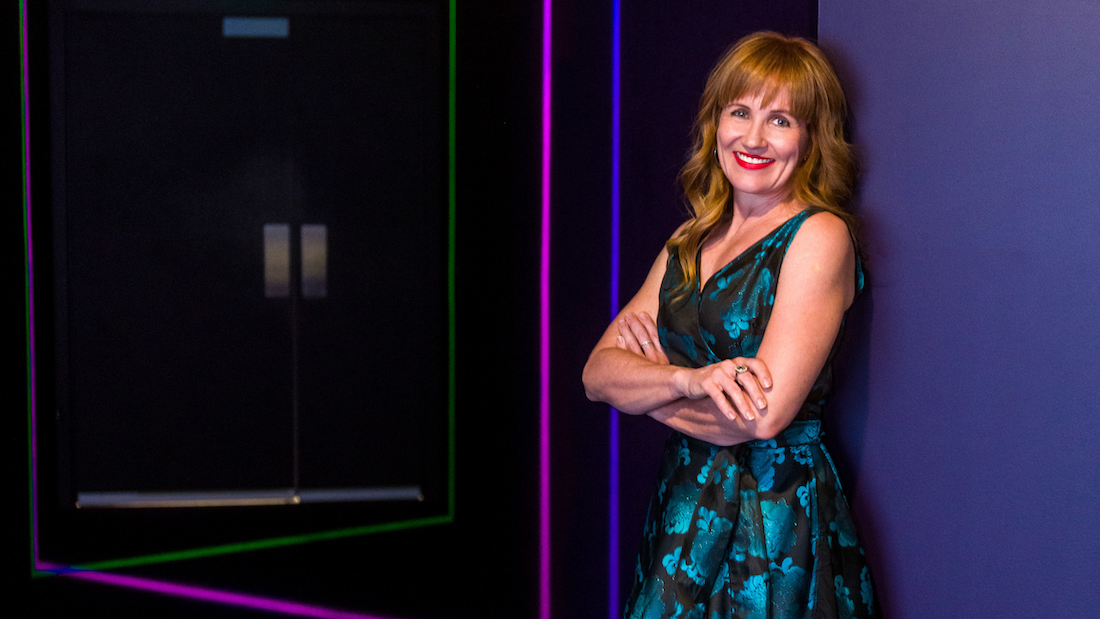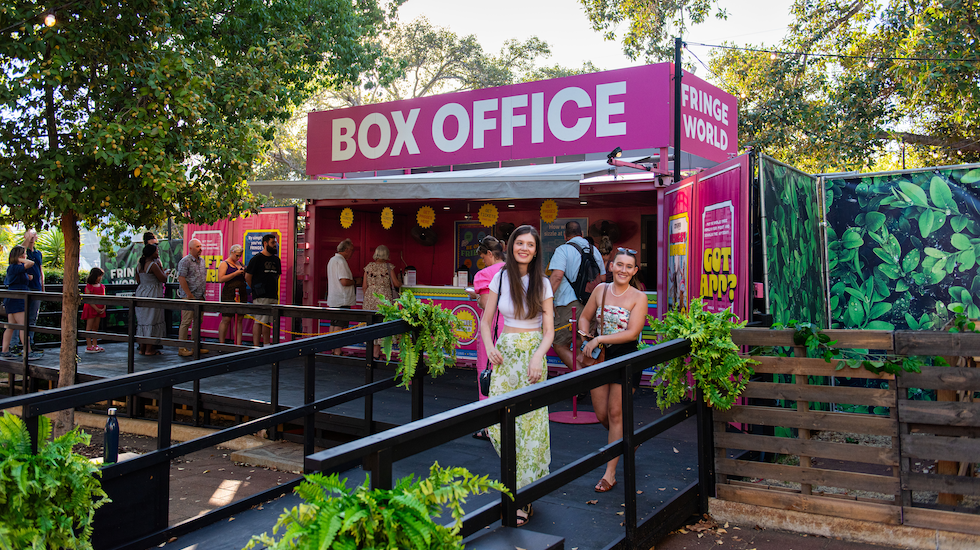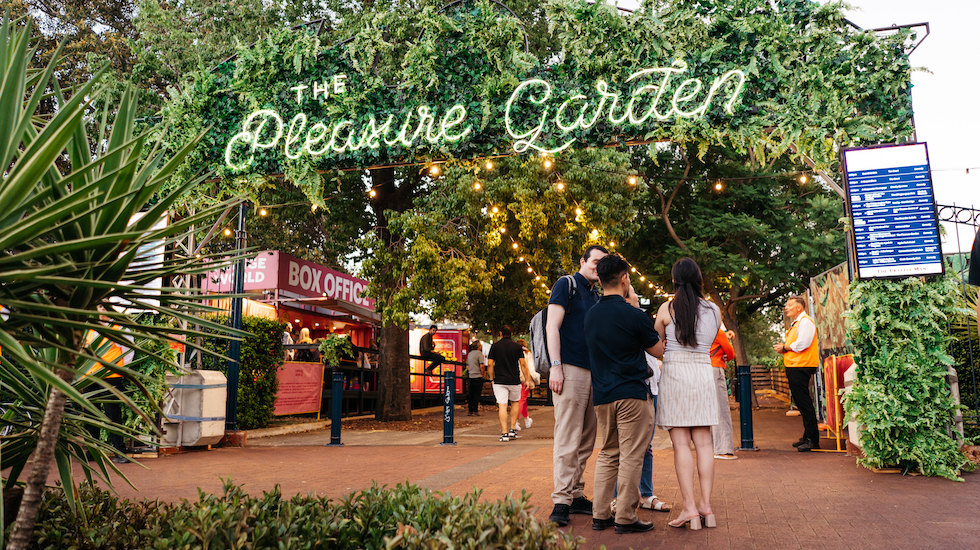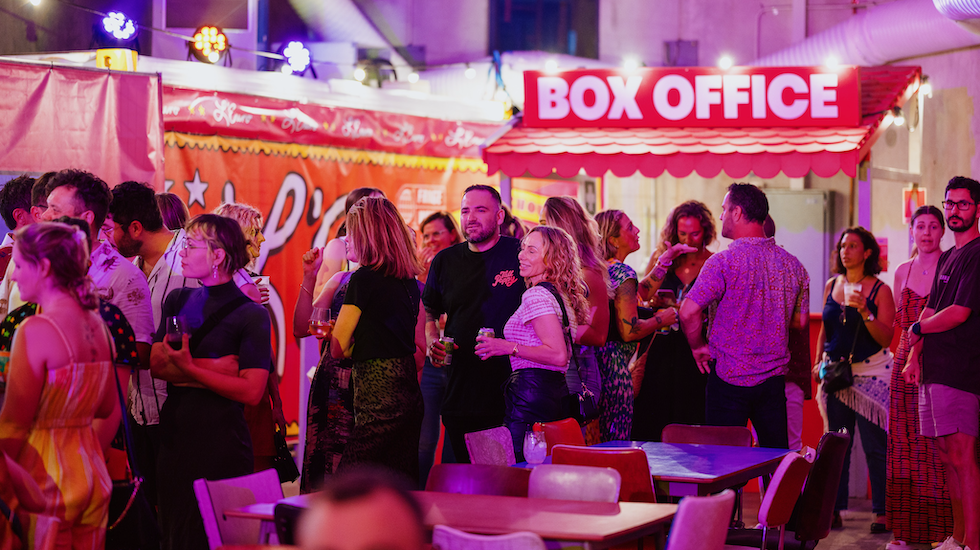
Fringe World 2025: Dance away them geopolitical blues
The launch today of Fringe World marks the start of Perth’s festival season. The Fringe runs through until February 16, by which time it will have handed the baton on to Perth Festival. Up until P.J. Harvey shakes Kings Park on Tuesday, March 4, the last new show in Perth Festival, the city will be alive with wild art. Given that Fringe World is now the third largest fringe festival in the world, there will be few, if any, places on the planet this art-lively over the next seven weeks. This is cause for both celebration and pride. What a gift for the people of Perth—especially when so many other parts of the world are facing a horror show.
Fringe World 2025 is going to be big. At 577 events with an estimated 2,800 participating creatives, it is not quite back to its pre-COVID peak but is an advance on last year. Whether it be cabaret, circus, comedy, dance, film, music, street arts, theatre, or visual art, there are shows for all areas of interest.
Once again the festival will spread across the metro area, with the usual strong focus in the inner city and Northbridge. Of the 104 venues, 41 are located within the City of Perth. There are all the usual suspects: The Pleasure Garden, Downstairs at the Maj, The Ellington, the State Theatre Centre, Subiaco Arts Centre, The Rechabite, Hackett Hall (WA Museum), and the Perth Town Hall—plus a plethora of pop-up and permanent theatres and auditoria across the breadth of the city. The Rechabite will be of special significance this year as it is hosting the late-night artist club, the Budgie (where all the smugglers congregate).
It is a great testament to the strength of the WA arts scene and the importance of Fringe World as a forum for its work that some 300 of the shows in the program originate in WA. Of the remainder, 185 come from interstate and 92 from overseas. There are 220 world premieres, with a further 40 Australian premieres and 98 WA premieres. This translates to 358 shows new to WA, more than most people will see in a lifetime.
With a $32 average ticket price, 23 free events, and 124 family-friendly events, it is highly accessible. There is something for everyone.

Directing Fringe World is a tough gig, especially in the current economic climate. Jo Thomas, CEO of Artrage, the producer of Fringe World, has now been in the role for fifteen months. Although this is the second festival she has fronted, it is the first time she has been in the driver’s seat. Last year the program was pretty well in place when she arrived from Queensland, so she was as much an observer as a participant.
Thomas has had a heavy year. As she says, there has been a lot of fence-mending and bridge-building. The COVID years were particularly gruelling for Fringe World. Although it was lucky not to have to cancel an entire festival and only endured a ten-day lockdown in the middle of its 2021 outing, the pandemic took its toll on the finances and its core production team as well as the participating artists and audiences. Many of these issues remain, though Thomas has been working hard to address them.
As well as building rapport with the Perth arts, business, and government communities, she’s also had to deal with the ongoing cost-of-living crisis and the greater cyber threats that every organisation now faces. When you add in the need to be an advocate for the arts in general to all sectors of our society, you appreciate how daunting the task has been for someone coming in from the outside. Thomas is to be applauded for the fine job she has done as well as the other significant advances she has overseen.
Mid-year, under the aegis of Tourism WA and on very short notice, Artrage pulled together the RE//PERTH Festival. This new venture brought some much-needed life to the city’s winter months.
Following this, the organisation moved its headquarters from the old Red Parrot/Berlin Nightclub complex in Northbridge to a beautifully restored heritage building on the corner of Hay and Barrack Street. No longer shut away in a closed box, the new office has outward-facing windows and an airy central courtyard. As well as Thomas’ fresh approach, access to daylight and fresh air has further lifted the staff’s spirits. With Moana’s crumbling ballroom next door, the Perth Town Hall opposite, the Liberty Theatre complex down the street, and the Hay Street Mall downstairs, there are plans in future years to make this precinct a major arts hub. This will further break the tyranny of Northbridge and allow another cohort of inner-city residents immediate access to Fringe World.
There is one big issue, though, that won’t go away in a hurry: the changing economics of mounting a festival.
Costs have risen by more than fifty percent in the last three years, and although there have been some wins in government funding (Lotterywest recently committed a further $4.5 million to Fringe World over the next three years), they do not go anywhere near covering the shortfall. Sponsorship too has fallen behind, especially as no replacement has been found for the Woodside partnership that ended two years ago.
Finding enhanced financial support is a big challenge that must be met if Fringe World is to continue in its current form. The company now has a dedicated fundraising team that will hopefully rise to the occasion.
Luckily for them, the festival has a massive attendance, estimated in 2025 to be 550,000. The largest for any single arts event in WA, eclipsing Perth Festival, this makes an attractive investment for both funders and sponsors. Hopefully it will mean that new supporters can be found and the festival’s financial base can be secured.

Nonetheless, for certain sectors within the Perth arts scene, there is a somewhat ironic downside to the size and strength of Fringe World. Explaining this requires a digression into the history of the arts in Perth.
Like a number of historic WA arts companies, the Perth Fringe, the collective title for the various manifestations of this ever-evolving festival, was established by a group of artists who wanted a profile forum for their non-mainstream, challenging, and often edgy work. To better explore the parameters of their chosen art form, they needed to rationalise their costs and attract a larger audience. Noble aims that the earlier manifestations of Fringe World (the Perth Fringe and the Artrage Festival), to varying degrees, satisfied.
Invariably, though, for many art-driven companies, particularly in the performing arts, success in this regard may be comparatively short-lived. Once the company gains greater levels of government funding, the pressure mounts to attract an ever larger audience. This makes perfect sense from the funders’ point of view: if you are getting a significant amount of taxpayers’ money, you should present work that a significant number of taxpayers want to see. But, as it is always easier to give people what they know they want rather than challenge them with something new and different, this often means that the emphasis of a company’s work changes. It stops being arts-driven and becomes more audience-driven; the work becomes less challenging and edgy, more mainstream and popular. If the company succeeds in attracting a larger audience, the funders and sponsors require that it be maintained.
Different stages of a company’s life cycle make different demands and require different approaches. Unless capable of reaching audiences beyond the state (as per The Last Great Hunt theatre co) or prepared to fold rather than compromise its artistic vision (as per ThinIce theatre co), to survive, an arts company has little choice but to follow the money, especially in a conservative culture like Western Australia. But in the process, the original cohort of artists, or more commonly their successors, may be disenfranchised. Back to square one. Call it the price of success.
To some extent this has happened to the Perth Fringe through the growth and popularity of Fringe World. Many of those who founded the original organisation are no longer drawn to its current manifestation, often claiming that the work now is too commercial and populist for their interest, not challenging or edgy enough. Although if you look, you will find challenging and edgy work in the Fringe World program, there is no doubt that such shows are overshadowed by the more popular, commercial ones.
Maybe it is time for these edgier artists to break away from Fringe World and form a new festival of their own? They could revert to the old Artrage Festival formula and mount an event at a less cluttered time of year, back in spring perhaps?
But then again, maybe over the next few years, finances permitting, Fringe World will find ways to better accommodate this cohort? Now that inroads have been made into the more behind-the-scenes, nuts-and-bolts issues and morale is generally on the rise, attention could be turned to providing these and all participating artists with an enhanced level of support? That is, after all, one of the organisation’s core aims, and Thomas and her team are deeply committed to it.
As Thomas puts it, the role of a Fringe is largely that of a marriage broker who brings the audiences and artists together. She herself comes from an artist background and appreciates the importance of work that pushes the parameters, which is usually what the edgy stuff does. She regards the arts as crucial in their own right, whether broadly popular or aimed at a specific group, and sees creativity in all its manifestations as essential to a healthy society. For her, the artists are workers, and art is work. It is encouraging that the whole Artrage team is behind her in this.
With a unique people’s festival like Fringe World, where everyone is welcome, tickets are affordable, and the team producing it is committed to making the best experience for artists and audiences alike, there is much to hope for.

In unsettling times, as ours are shaping up to be, most people turn to entertainment to take their minds off things. Eat, drink, and be merry… Under these circumstances, comedy flourishes, along with singing, dancing, circus, and the lighter-hearted presentations. As always, the more serious among us look to the arts to help make sense of what’s going on.
A few may even argue that the reason we find ourselves in such dark times now is an overwhelming propensity to treat all art as entertainment, regardless of whether the times are light or dark. That is worth considering. But for the majority, the maxim is party hard when the going’s good, party harder when the going gets tough.
These people will easily find what they want in this year’s Fringe World. And for the others, well, as mentioned before, the darker arts are represented; you just have to look a bit harder to find them. In the meantime, though, we can all do with a good laugh, some dancing, singing, and the overall merriment that Fringe World provides. What a gift.
Full Fringe World program details can be found on its website.
For a more detailed profile of Jo Thomas and a summary history of the method and madness of the Perth Fringe see this X-Press feature article from last year.
IAN LIBURNE
Ian Lilburne was the founding director of the Artrage Festival. He worked for the Perth Fringe from 1986 to 1994, covering one Fringe and six Artrage festivals.
